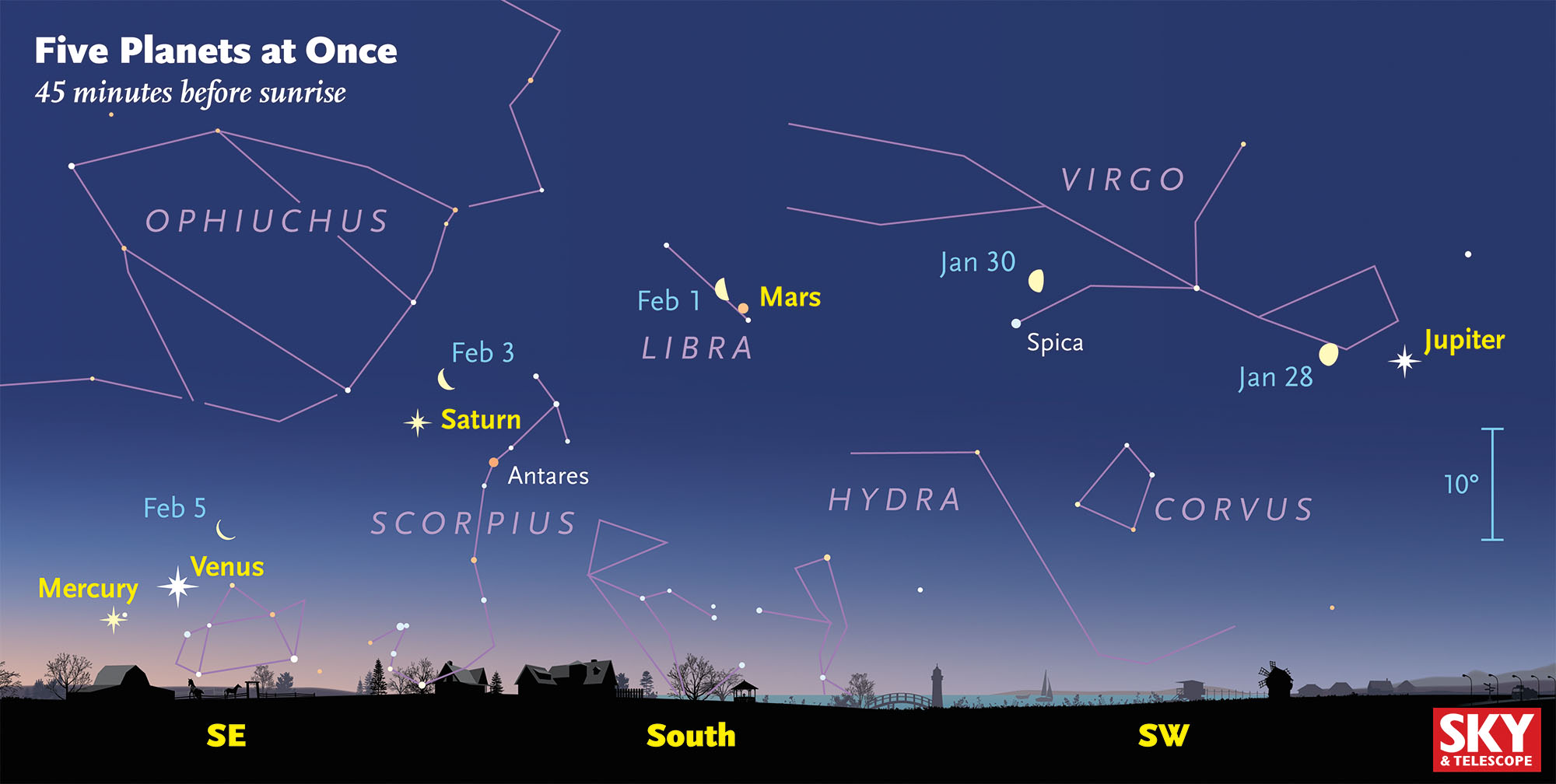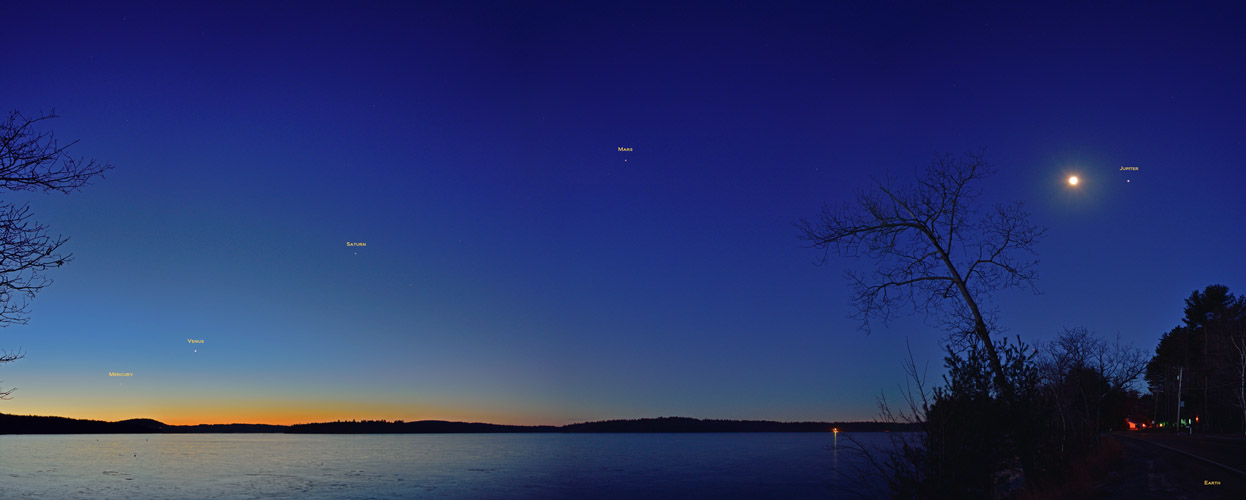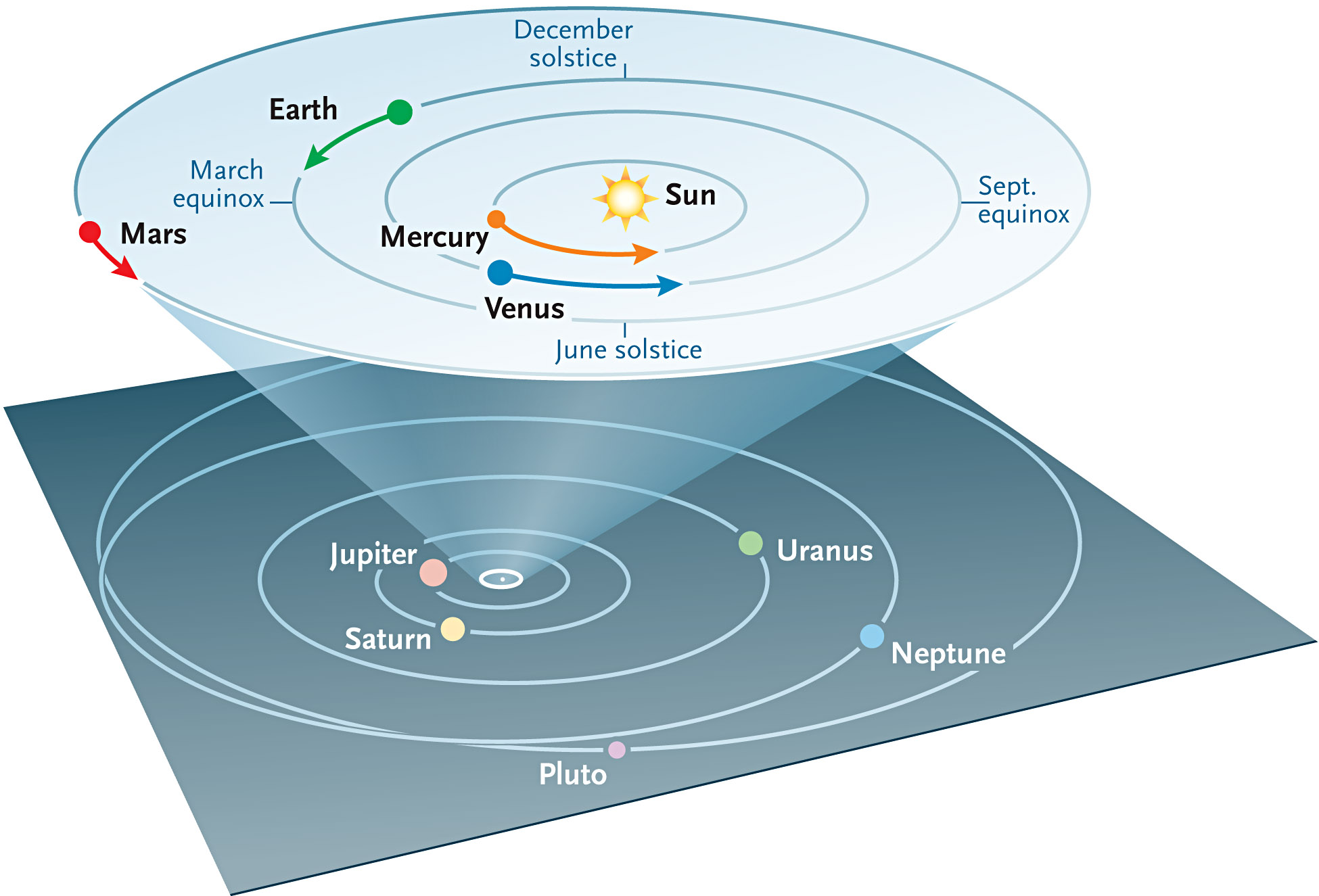Early risers have been patiently waiting for the innermost planet to join four others — and the Moon — in the predawn sky. Now they're all in view.
When I woke around 5:30 this morning, I could see scintillating shafts of moonlight slicing into my room. That was my cue to head to the highest hill near me outside of Boston so I could catch a glimpse of all five naked-eye planets arrayed in the predawn sky.
By 6 a.m. I was at Robbins Farm, a park perched atop the town of Arlington with an aerial view of the Boston skyline to the southeast. One other person was already there. "You here to see the planets?" I asked. "Oh yeah," he replied.
In the wake of the fierce blizzard that struck the Northeast over the weekend, it was perfectly clear — ideal conditions for our quest. Together we swept our eyes over the heavens, identifying each planet across a great swath that stretched from southeast to southwest.

Sky & Telescope diagram
Bright as it was, Venus was the obvious starting point, but we couldn't immediately find Mercury to its lower left. So instead we pointed at and spoke the names of Venus, Saturn, Mars, and Jupiter, respectively, along with those of a few nearby stand-out stars like Antares and Spica.
Off to the right of Jupiter, as if to say "Don't forget me," hung the waning gibbous Moon, a blazing floodlight to the west.
Then it was back to the southeast to pinpoint Mercury. Initially we both looked too low, too close to the buildings of the Boston skyline. But soon we spied it, floating in the amorphous edge where the dark blue of night was losing ground by the minute to the orange of the impending sunrise. As twilight advanced, Mercury soon became challenging to see naked-eye, but seen with our binoculars it popped right out.

Sean Walker

Sky & Telescope diagram
Altogether it was quite a spectacle to see all five naked-eye planets gathered for our inspection, bracketed by the Moon in the west and the still-to-rise Sun in the east.
And what better way to envision the ecliptic, the Sun's apparent path among the stars? It's an imaginary trace through the zodiac, represented on this morning by Sagittarius, Scorpius, Libra, Virgo, and Leo — and conveniently delineated by the arc of those five planets plus the Moon. Geometry was never more splendidly displayed.
In the next week or two I encourage you to find the time — and a clear predawn sky — to witness this convergence for yourself. You won't regret the early rising.
The coming year offers lots of other celestial sights, and there's no better guide to enjoying them than SkyWatch 2016. Its constellation maps and observing guides perfect for novice stargazers and anyone who's ever been amazed by the beauty of the night sky.
 3
3
Comments
Robert Victor
January 26, 2016 at 1:09 am
Observing in 50-degree temperatures outside my apartment in Palm Springs, CA this morning (Jan. 25), enjoyed the lineup of Moon-Regulus-Spica-Mars-Saturn (with Antares to lower right), Venus, and finally my first naked-eye view of Mercury 62 to 44 minutes before local sunrise. During that interval, the Sun was 13 to 10 degrees below horizon, while Mercury climbed from 3 to 7 degrees above horizon. Enjoyed visualizing being a passenger on Spaceship Earth heading in a direction a few degrees west (right) of Mars, and how the three outer planets will drift toward the western horizon in coming weeks, while the faster moving inner planets will sink into the solar glare on the far side of the Sun. I won't miss Feb. 1, when the Last Quarter Moon crosses in front of our Spaceship, some 3.5 hours Earth-travel time ahead of us. Share the view!
You must be logged in to post a comment.
Tom Hoffelder
January 28, 2016 at 8:04 am
Good title! "Five Planets in View" seems more representative of reality than "See Five Planets at Once."
You must be logged in to post a comment.
profpb
January 30, 2016 at 8:19 am
I'm almost tired of saying this: I see six planets in this view. I live on one of them. Dr. B., AstroVIP
You must be logged in to post a comment.
You must be logged in to post a comment.